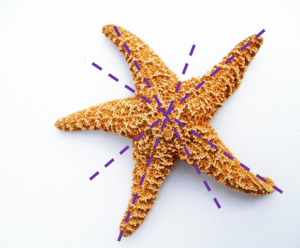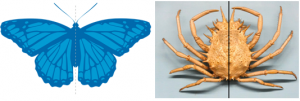Table of Contents
- Animal Kingdom: Basis of Classification
- Levels of Organisation
- Symmetry
- Diploblastic and Triploblastic Organisation
Despite the fact that a bewildering variety of species with different structures and forms exist out there, organisms share some common features among themselves. These similarities are the basis of classification. Classification is the systematic arrangement of things around us for easy identification and study. The basis of classification can vary according to the purpose of the classification. A biological classification generally pins out the morphological and evolutionary similarities as its basis. Let’s go on the basis of classification of the animal kingdom in detail.
Animal Kingdom: Basis of Classification
The animal kingdom is the largest kingdom amongst the five kingdoms consisting of all animals. Animals are multicellular eukaryotes; do not possess a cell wall or chlorophyll like plants, and share the same mode of nutrition, that is, the heterotrophic mode. Besides these similarities, they are also related to their cell arrangement, body symmetry, level of organization, coelom, presence/absence of notochord, etc. Based on these features, the animal kingdom has been classified into 11 different phyla. The different criteria for animal classification are explained below.
Levels of Organisation
Though animals are multicellular, the level of organization of cells varies from one animal to another. Certain animals have a loose mass of cells and show the cellular level of organization. Such animals have been categorized into the phylum Porifera. As we move on, the complexity of body design amplifies and the division of labour occurs among the tissues. These animals exhibit tissue level of organisation and are classified as coelenterate. Phylum Platyhelminthes and Aschelminthes have an organ level of organization. Nor-chordates such as Annelids, Arthropods, Molluscs, Echinoderms, and Chordates have a specialised organ system for their physiological activities. They have the organ-system level of organisation. Although these animals have organ systems level of organisation. The complexities of organ systems vary and are categorised into different phyla.
Symmetry
Symmetry is another basis for the classification of animals. Generally, animals show two types of symmetry-
Radial symmetry: A symmetry where any plane passing through the central axis divides the body into two equal halves is called the radial symmetry. Examples are Coelenterates, ctenophores and echinoderms.

Bilateral symmetry: In bilateral symmetry, only a single plane divides the body into two equal halves, e.g. Annelids, Arthropods, Molluscs, etc.

However, some animals do not show any symmetry i.e. their body can’t be divided into two halves in any plane passing through the centre. Such animals are said to be asymmetrical, e.g. Poriferan.
Diploblastic and Triploblastic Organisation
All animals develop their tissues, organs and organ system from the cells that form the embryonic layers. Based on the number of embryonic layers, animals are classified into two- diploblastic and triploblastic animals.
Diploblastic animals: In diploblastic animals, the cells form two embryonic layers, i.e., an outer layer- ectoderm and an inner layer – endoderm, e.g. Phylum Coelenterata.
Triploblastic animals: In triploblastic animals, cells are arranged in three embryonic layers- ectoderm, endoderm and a middle layer – mesoderm. Animals belonging to Phyla Platyhelminthes to Chordata have a triploblastic organisation.
Coelom
The coelom is a key feature for classification. The coelom is a cavity between the body wall and gut wall, lined by mesoderm. Depending on the presence/absence of coelom, animals have been classified into three:
Coelomate: Coelom is present in a coelomate. Animals belonging to phyla Annelida, Mollusca, Arthropoda, Echinodermata, Hemichordata and Chordata are examples of coelomates.
Pseudocoelomate: In pseudocoelomates, mesoderm appears as pouches between the endoderm and ectoderm. But the cavity formed is not lined by mesoderm, e.g. Aschelminthes.
Acoelomate: Coelom is absent in an acoelomate, e.g. Platyhelminthes.
Notochord
The notochord is a longitudinal, cartilaginous supporting rod running beneath the nerve cord. The animal kingdom has been broadly classified into two, based on the presence or absence of notochord- Non-Chordata and Chordata. Chordates possess notochord while non-chordates lack it. Animals belonging to the Phylum Porifera to Phylum Echinoderms are non-chordates.
For more detailed information about Animal Kingdom, visit BYJU’S.
- Classification of Animal Kingdom
- Five kingdom classification system
- Kingdom- Monera, Protista And Fungi
- Animal Kingdom- Animalia, Subphylum
- Kingdom Animalia: Lower Invertebrate Animals

It is very helpful for me.
Thanks.
Thank you it’s really helpful
It’s so useful for me
Wonderful, very helpful